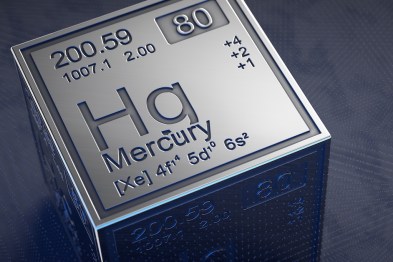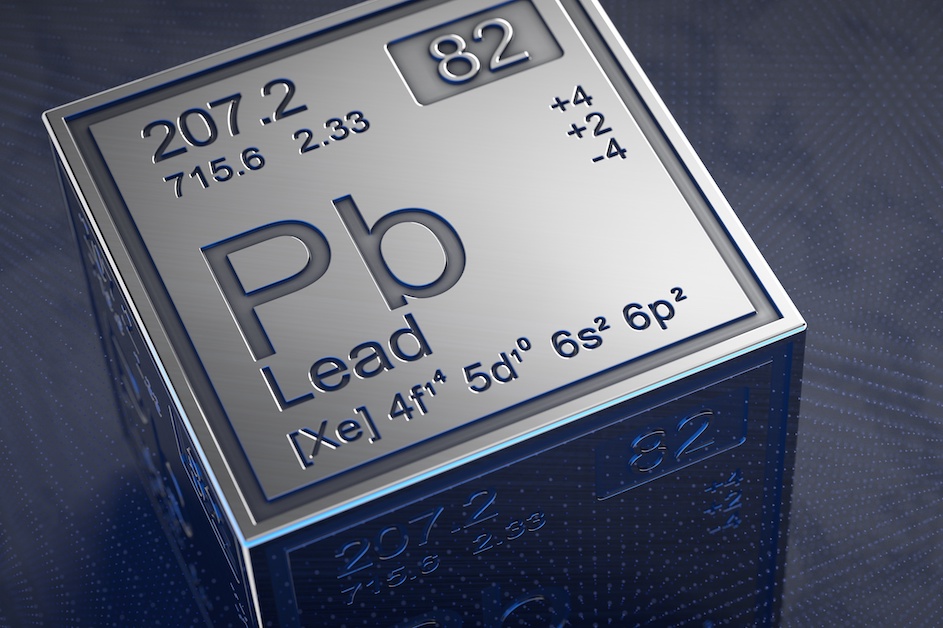Mercury Stable Isotope Ratio Testing
 Environmental forensics is the application of scientific techniques to identify the sources, distribution, and movement of pollutants in the environment. One emerging tool in this field is the use of mercury isotopes. Mercury (Hg), a toxic metal, has been historically used in various industrial and agricultural applications, and its presence in the environment can provide valuable clues about pollution sources and pathways. Mercury isotope ratios are used as a tool in an increasing number of field studies for source attribution and transport processes in stream systems contaminated by different sources such as former Hg mines, gold mining or processing activities, chlor-alkali or other industrial activities(1, 2). The determination of natural variations in mercury isotope ratios is a rapidly emerging area of research, opening new avenues for studying the fate of mercury in the environment(1). Mercury isotope signatures can be used as tracers for sources and processes, and can help understand the global mercury cycle(1).
Environmental forensics is the application of scientific techniques to identify the sources, distribution, and movement of pollutants in the environment. One emerging tool in this field is the use of mercury isotopes. Mercury (Hg), a toxic metal, has been historically used in various industrial and agricultural applications, and its presence in the environment can provide valuable clues about pollution sources and pathways. Mercury isotope ratios are used as a tool in an increasing number of field studies for source attribution and transport processes in stream systems contaminated by different sources such as former Hg mines, gold mining or processing activities, chlor-alkali or other industrial activities(1, 2). The determination of natural variations in mercury isotope ratios is a rapidly emerging area of research, opening new avenues for studying the fate of mercury in the environment(1). Mercury isotope signatures can be used as tracers for sources and processes, and can help understand the global mercury cycle(1).
Brooks Applied Labs currently offers mercury (Hg) stable isotope ratio testing for environmental forensic studies. Mercury has a unique isotopic pattern and small differences in the ratios of these isotopes can help in identification of the source, transport, and biogeochemical fate of mercury in atmospheric bulk deposition, soils, freshwater, and seawater matrices.
Isotopic analysis of mercury provides the following forensic insights:
1. Source Identification
Different mercury sources, such as coal combustion, mining, waste incineration, and chlor-alkali industries, have distinct mercury isotopic signatures. By measuring the ratio of these isotopes, scientists can pinpoint whether mercury contamination originates from a particular industrial process or a natural source.
2. Tracing Mercury Pathways
Once mercury enters the environment, its isotopic composition can be used to trace its movement through air, water, and soil. This helps forensic experts track how mercury disperses, identifying key transport mechanisms, including atmospheric deposition and groundwater flow.
3. Identification of Anthropogenic vs. Natural Sources
Using isotopic signatures, researchers can distinguish between mercury released from human activities and that from natural sources like volcanic eruptions or mineral deposits. For example, the isotopic composition of mercury from fossil fuel combustion differs significantly from that of mercury released by geothermal sources.
4. Assessment of Environmental Impact
Isotope ratios can help determine the extent to which mercury has been altered by biogeochemical processes, such as methylation (which converts mercury to its organic form, methylmercury). This provides insights into the bioavailability of mercury in ecosystems, which is crucial for assessing potential risks to wildlife and human health.
5. Monitoring of Remediation Efforts
After mercury contamination is detected and remediation measures are implemented, isotopic analysis can be used to monitor the success of these efforts. By comparing isotopic ratios before and after intervention, experts can assess whether mercury levels are being reduced effectively and if new sources of contamination have emerged.
 Brooks Applied Labs utilizes a Nu 1700 or a Nu Plasma HR Multi Collector ICPMS to achieve very high accuracy and precision for mercury isotopes. Our results include all appropriate QA/QC which is usually not available from academic institutions.
Brooks Applied Labs utilizes a Nu 1700 or a Nu Plasma HR Multi Collector ICPMS to achieve very high accuracy and precision for mercury isotopes. Our results include all appropriate QA/QC which is usually not available from academic institutions.
NIST RM 8610 (UM-Almaden) is used by Brooks Applied Labs as a secondary standard. Mercury isotopic composition of this standard is measured using cold vapor multiple collector inductively coupled plasma mass spectrometry (CV-MC-ICP-MS). Uncertainty in the average isotope ratios measured by Brooks Applied Labs is represented by 2SD across all analysis replicates. Certified values are provided for comparison.
| δ204Hg (‰) |
Unc. (‰) |
δ202Hg (‰) |
Unc. (‰) |
δ201Hg (‰) |
Unc. (‰) |
δ200Hg (‰) |
Unc. (‰) |
δ199Hg (‰) |
Unc. (‰) |
|
|---|---|---|---|---|---|---|---|---|---|---|
| Determined | -0.89 | 0.08 | -0.55 | 0.06 | -0.46 | 0.06 | -0.29 | 0.05 | -0.17 | 0.03 |
| Certified Values | -0.82 | 0.07 | -0.56 | 0.03 | -0.46 | 0.02 | -0.27 | 0.01 | -0.17 | 0.01 |
| Δ204Hg (‰) |
Unc. (‰) |
Δ201Hg (‰) |
Unc. (‰) |
Δ200Hg (‰) |
Unc. (‰) |
Δ199Hg (‰) |
Unc. (‰) |
|
|---|---|---|---|---|---|---|---|---|
| Determined | -0.07 | 0.06 | -0.05 | 0.03 | -0.01 | 0.03 | -0.03 | 0.02 |
| Certified Values | n/a | n/a | -0.04 | 0.01 | 0.00 | 0.01 | -0.03 | 0.02 |
Mass-dependent isotope fractionation (MDF) is reported as the permil (‰) deviation from the average of NIST SRM 3133 bracketing standards using delta notation:
δxxxHg (‰) = ([(xxxHg∕198Hg)sample ∕ (xxxHg∕198Hg)NIST SRM 3133] − 1) ∗ 1000
where xxx is the mass of each mercury isotope between 199Hg and 204Hg.
Mass-independent isotope fractionation (MIF) is reported as the difference between the measured δxxxHg value and that which is theoretically predicted by the kinetic mass-dependent fractionation law using capital delta notation:
ΔxxxHg (‰) ≈ δxxxHg − (δ202Hg ∗ β)
where xxx is the mass of each mercury isotope 199Hg, 200Hg, 201Hg, and 204Hg, and β is a constant for each isotope (0.2520, 0.5024, 0.7520, and 1.493, respectively) (Blum and Bergquist 2007).
Use of mercury stable isotope ratio testing can often decrease the scope of work for investigative projects, ultimately reducing the cost of the investigation and increasing the confidence in results due to the absolute nature of the testing procedure. This is especially important when dealing with tort and environmental forensic litigation cases. In addition, institution of proper sampling plans is a necessity to ensure all localized variables are identified to account for as many variables as possible.
For project inquiries, applicability of methodologies, and pricing information feel free to contact us.
References:
- https://doi.org/10.1525/california/9780520271630.003.0004 “Use of Stable Isotopes in Mercury Research” – Oxford Academic
- https://doi.org/10.3389/fenvc.2022.1058890 “Large extent of mercury stable isotope fractionation in contaminated stream sediments induced by changes of mercury binding forms”
Stable Isotope Ratio Testing Services




